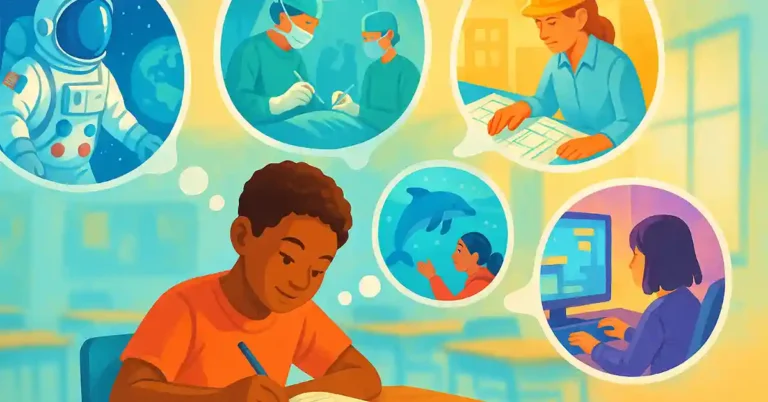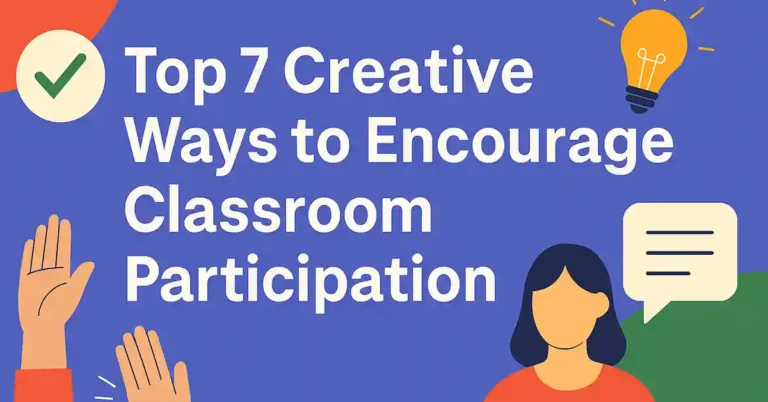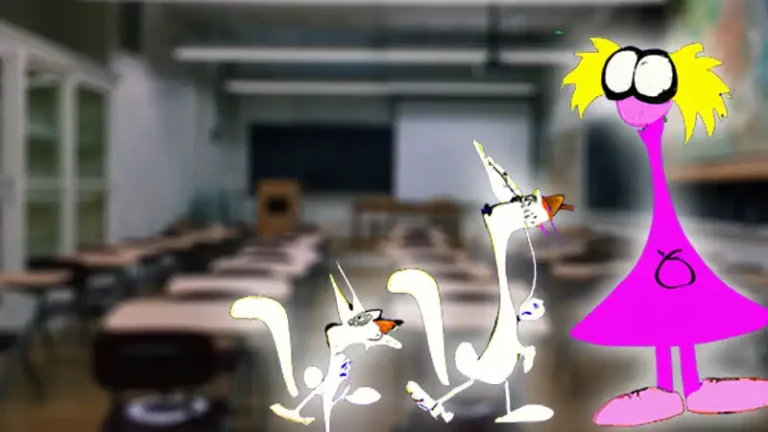33 Amazing Improv Games for Middle School Students
Middle school is that unique phase where students are not quite kids but not quite teenagers. It’s a transformative time, full of discoveries, self-awareness, and the need to express and understand the rapidly changing emotions. Amidst the challenging curriculum and the regular tests, there’s one tool that can make this transition smoother while offering a plethora of educational and personal growth benefits: improv games!
As an educator, I’ve seen the magic of these improv exercises in the classroom. Beyond the laughter and the silliness, the benefits of incorporating improv games into your teaching arsenal are manifold. Here’s why:
Builds Confidence: Middle school students often struggle with self-esteem. Improv games provide them with a platform to express themselves, make mistakes, and realize that it’s okay to be imperfect. They learn to think on their feet and handle unexpected situations with grace.
Enhances Listening Skills: Improv requires active listening. Players must be present, absorbing every word and reacting to their peers. This skill translates directly to classroom attentiveness and interpersonal communication skills.
Boosts Creativity and Imagination: In a world where standardized tests reign supreme, nurturing the creative spark is vital. Improv games are a great way to foster creative thinking and encourage students to view situations from multiple perspectives.
Promotes Teamwork: Success in improv often hinges on collaboration. Students learn to work in tandem, understanding the importance of each team member’s role and valuing collective success over individual accolades.
Enhances Emotional Intelligence: As students role-play different scenarios, they walk in others’ shoes. This increases empathy, understanding, and the ability to read and respond to emotional cues.
Makes Learning Fun: Last, but certainly not least, improv games infuse joy and laughter into the learning process. Students look forward to these sessions, and the positive emotions they evoke can make even the most complex subjects more digestible.
General Guidelines for Playing Improv Games
Before we delve into our list of 31 fantastic improv games, it’s essential to set the stage (pun intended!) with some general guidelines. These tips ensure that the games run smoothly, remain inclusive, and create a positive environment for every student:
Establish a Safe Space: Above all, the classroom should be a judgment-free zone. Emphasize the importance of supporting one another. There are no “wrong” answers in improv; every contribution is valid.
Warm-Ups Are Essential: Just like physical exercise, starting with a warm-up game is good. These quick, simple activities can get the creative juices flowing and set the tone.
Keep It Inclusive: Always strive to include everyone. If you notice a student hesitating or holding back, gently encourage them or modify the game to make it more accessible.
Set Clear Instructions: Before starting any game, ensure that the rules are clear. A short demonstration or example can help students understand the game’s objective and flow.
Emphasize Active Listening: One of the core tenets of improv is active listening. Remind students to pay close attention to their peers, reacting and building on their ideas.
Encourage “Yes, And…” Thinking: In improv, the “Yes, And…” principle means accepting what another player has presented (“Yes”) and then adding to it with some construction of your own (“And…”). It promotes positive collaboration and keeps the story or game moving forward.
Stay Flexible: While rules are essential, remember that the primary goal is to foster creativity and fun. If a game isn’t working or students are struggling, it’s okay to pivot or adapt the rules.
Limit Negative Feedback: Constructive criticism has its place, but during the game isn’t it. If a student is not following a game’s premise, gently guide them back rather than pointing out the mistake.
Celebrate Successes: Whether it’s a hilarious moment, a breakthrough for a typically shy student, or just the end of a game, celebrate! Applause, cheers, or simple words of encouragement go a long way.
Debrief After the Game: Spend a few minutes after each game reflecting on what went well, what was learned, and how students felt. This reflection reinforces the game’s educational value and allows students to process their experiences.
Armed with these guidelines, you’re all set to introduce the thrilling world of improv to your students. Remember, the goal isn’t perfection—it’s growth, collaboration, and fun! These can be used for more than just drama class.
Onto The Games!
1. Zip Zap Zop
A fun improv game that tests concentration and response time, Zip Zap Zop is all about keeping the flow going. Players stand in a circle. One player starts by pointing to another and saying “Zip”. The player pointed at then points to someone else, saying “Zap”. The process continues with “Zop”. The cycle then begins again with “Zip”. The aim is not to break the rhythm or get the words wrong. If someone hesitates or says the incorrect word, they step out of the circle or do a fun penalty move. This game is excellent for improving focus and group coordination.
2. Freeze Tag
A classic in the world of improv, Freeze Tag is about spontaneity and creativity. Two players begin by acting out a scene. At any moment, an audience member or another player shouts “freeze”. At this command, the actors freeze in place. The person who yelled then steps in, tapping out one of the frozen players. They then start an entirely new scene using the existing frozen pose as a starting point. This game fosters quick thinking and adaptability.
3. Bus Stop
Bus Stop is a character-driven exercise that challenges players to adjust their roles dynamically. One player starts by sitting on a ‘bus stop’ bench, adopting a clear character—perhaps an elderly woman or a businessman late for work. As other players join one by one, they create their characters based on those already at the stop. Each new arrival changes the dynamics, and players must adjust their roles accordingly. This game encourages observation and character adaptation.
4. One Word at a Time Story
Building a narrative as a team is the heart of One Word at a Time Story. Players line up or sit in a circle. The first player says a word, starting a story. The next player adds another word, and so on. For instance: “Once”, “upon”, “a”, “time”, “there”, “was”… and the story continues. Although a simple game, it challenges players to think quickly and collaboratively, ensuring the narrative makes sense while also being creative.
5. Death in a Minute
This humorous and dramatic game adds a ticking clock to the mix. In Death in a Minute, players are given a scene to act out, but with one catch: one character must ‘die’ in a comedic, non-graphic manner within 60 seconds. The death should be exaggerated and light-hearted. It could be from something as silly as laughing too hard or spotting a fake spider. This game is all about comedic timing, creativity, and ensuring scenes have a clear beginning, middle, and end.
6. Party Quirks
A delightful guessing game, Party Quirks hinges on characterization. The first person takes on the role of a party host, while the rest are the guests. Each guest gets a secret quirk or identity, such as “thinks they’re turning into a chicken” or “believes they’re invisible.” While interacting at the ‘party,’ the host tries to guess each guest’s unique quirk. It’s a test of subtlety for the guests and observational skills for the host. A fun game to play and watch!
7. Props
Unleash the power of imagination with Props! Players are handed a random object—a spoon, a hat, or any everyday item. Within a set timeframe, they must use it in as many inventive ways as possible, transforming it from its original purpose. For instance, a spoon could become a shovel, a microphone, or a fencing foil. This game cultivates creativity and encourages students to view the world from multiple perspectives. Setting a time limit for each prop is a good idea.
8. World’s Worst
A comedic goldmine, World’s Worst is about exaggerated inefficiency. Players are given a profession or activity, such as a doctor, teacher, or dancer. They then act out the most hilariously terrible way to do that job or activity. It’s all about humor and timing while also allowing students to understand the essentials of a given role. This is a class, great improv game.
9. Forward/Reverse
Like a scene controlled by a remote, Forward/Reverse challenges players’ memory and adaptability. As they enact a scene, an offstage ‘director’ has the power to call “reverse” or “forward”, making them rewind or fast-forward their actions and dialogue. It’s a test of synchronization and offers tons of laugh-out-loud moments.
10. Questions Only
A game of wit and quick thinking, Questions Only is just as it sounds. A group member engages in a dialogue where they can only communicate using questions. “Is it raining outside?” The second player might respond, “Do you think I have an umbrella?” Then the first person might reply, “Isn’t that mine?” The moment someone slips up and makes a statement, they’re out, and the next person is in. It’s an excellent exercise in active listening and creative formulation of questions.
11. Alphabet Game
For those looking to combine linguistic skills with improv, the Alphabet Game is perfect. Two or more players hold a conversation, but each line must start with the subsequent letter of the alphabet. Player A might begin with, “Are you going to the store?” Player B could respond with, “But why would I do that?” And so forth. This game reinforces alphabetical knowledge while also prompting players to think several steps ahead. A variation of this game is picking up with the last letter from the previous player.
12. Expert Interview
A lesson in thinking on one’s feet, Expert Interview is both hilarious and challenging. One player becomes an “expert” on a wacky subject—like “The Secret Lives of Unicorns” or “Why Toes Are the True Windows to the Soul”. Another player takes on the role of an interviewer, posing questions about the topic. The expert must provide answers, no matter how absurd, but always justify their reasoning. This game promotes creativity, logical thinking, and the art of persuasion.
13. Sound Effects
In Sound Effects, players explore the auditory side of storytelling. One participant acts out a scene, whether it’s making breakfast or repairing an alien spaceship. The second person provides the accompanying sound effects, using only their voice for the improv scene. These effects can be exaggerated, adding an extra layer of humor and unpredictability. It’s a lesson in synchronization and amplifying a story through audio.
14. Human Props
While this clip isn’t appropriate for the classroom, anyone who might have seen the Richard Simmons episode can truly appreciate how good-natured Richard was on the show!
Turn players into the set with Human Props. As the main actors progress through a scene, they use other students as objects and props. A student could become a door, a tree, or even a horse! It encourages collaboration, physical creativity, and showcases how versatile humans can be in portraying non-human elements. It’s great for large groups and help team-building skills.
15. Two Headed Monster
In the Two Headed Monster, duo players must truly synchronize their minds. They speak in unison, representing a single character, and responding to others in the scene. Whether they’re ordering food or giving advice, both players must ensure their words match, leading to some spontaneous hilarity. This game is a fun way to teach team building, anticipation, and the importance of listening closely to a partner.
16. Emotion Switch
Emotion Switch is a roller-coaster of feelings requiring adaptability and a broad emotional range. Players act out a scenario, but there’s a twist: an offstage director calls out emotions at random intervals. Upon hearing the emotion, players must immediately switch to that emotion, adjusting their dialogue and actions accordingly. From “angry” to “ecstatic” to “confused”, the scene becomes a mosaic of ever-changing feelings. This game not only offers laughs but also aids in understanding and expressing various emotions.
17. Slide Show
A visual and narrative treat, Slide Show is all about creating vivid images with descriptions and enactments. Players pretend they’re presenting slides from an imaginary vacation or event. One player can be the ‘clicker’ who transitions the slides, while others pose to act out the described scene, frozen like a photograph. “Here’s when we discovered the underground city of gnomes!” can lead to players posing in curious and explorative ways. This game hones in on creativity and collaborative storytelling.
18. Change!
In the game of Change!, flexibility and adaptability are key. The young actors play a scene, but there’s a catch. Whenever the director yells “Change!” the player who just spoke must immediately modify their last line to something different. For example, if a player says, “I love ice cream!” after hearing “Change!” they might alter it to, “I’ve never tasted ice cream!” The scene evolves unpredictably, and players must think on their feet.
19. Pan Left/Pan Right
This game is a multi-scene challenge. Four players form a square, with two players forming a pair at the front. Each pair acts out a unique scene. When the director calls “Pan Left” or “Pan Right” the square rotates, bringing a new pair to the front and starting a different scene. As rotations continue, players must remember and maintain the storyline of their original scenes. It’s a test of memory, multitasking, and coordination.
20. Entrances and Exits
Entrances and Exits adds a dynamic movement to scenes. Each player is assigned a specific word before the scene starts. During the enactment, whenever their word is spoken, the player must either enter the scene from offstage or exit if they are already on. For instance, if a player’s word is “sunshine” and another character says, “I love the sunshine!” the player must respond accordingly. This game promotes active listening and adds an unpredictable element to scenes.
21. Hitchhiker
A delightful game of evolving quirks, Hitchhiker is set in a moving car with players as passengers. Initially, the car’s occupants have a neutral or baseline behavior. However, each time a new “hitchhiker” is picked up, they bring a distinct characteristic or quirk with them. Upon their entrance, all current passengers adopt this new behavior. If the hitchhiker is excessively cheerful, soon, the entire car is brimming with cheer. When another hitchhiker with a new quirk is picked up, the cycle continues. It’s a fun exploration of character adaptation and mirroring.
22. Press Conference
In the classic improv game, Press Conference, the art of deduction meets improv. One player is chosen as a famous individual, be it real like Einstein or fictional like Harry Potter. This player doesn’t know who they are and conducts a “press conference.” The other players pose as journalists, asking questions related to that character without directly revealing the identity. Based on these questions, the central player must guess who they are. This game sharpens listening skills and challenges players to craft questions that are informative yet indirect.
23. Conducted Story
Imagine a symphony of words, and you’ve got the essence of Conducted Story. Players stand in a line, and each contributes to the unfolding narrative. A “conductor” controls the flow by pointing to individual players, indicating whose turn it is to speak. If the conductor moves quickly, the story’s pace picks up, leading to rapid shifts and exciting twists. This game emphasizes teamwork, smooth transitions, and collaborative storytelling.
24. Day in the Life
Ever wondered how a mundane routine can become a theatrical masterpiece? Day in the Life achieves just that. One player narrates a typical day in their life, from waking up to going to bed. Other players dramatize these events, often amplifying ordinary occurrences to comedic proportions. Maybe making toast turns into a grand adventure, or a bus ride becomes an epic journey. It’s an exploration of perspective, finding humor in the everyday, and imaginative interpretation.
25. Machine
Celebrate the beauty of collective creation with Machine. Players come together to construct a “machine” using only their bodies and voices. One might start as a gear with rhythmic hand movements and a repetitive “clank,” while another could be a piston, using their arms and a “whoosh” sound. As more players join in, the machine grows in complexity. It’s a lesson in synchronization, creativity, and understanding how individual roles contribute to a bigger picture.
26. Dubbing
In Dubbing, voice and physical action diverge, leading to hilarious outcomes. Two players act out a scene but do so silently, using only body language and expressions. Meanwhile, two other players provide their voices, deciding what the silent duo are saying and thinking. Imagine a fierce warrior with the voice of a timid mouse or a ballet dancer speaking like a gruff pirate. The juxtaposition of action and voice, along with spontaneous dialogue, makes for comedic gold.
27. Gibberish Translator
Language and communication take a fun twist with the Gibberish Translator game. One player delivers a speech, asks questions, or tells a story in pure gibberish—no real words allowed. Another player then “translates” this gibberish into a coherent, often humorous, narrative in English. This game emphasizes the power of non-verbal cues, intonation, and creativity in filling the gaps of understanding.
28. Try That On for Size
How many explanations can a single action have? Find out with Try That On for Size. One player performs a simple action, like clapping hands or tapping their foot, and says, “Try that on for size.” The next player repeats the same action but gives a different reason for doing it, for instance, “I’m crushing invisible bugs!” It’s a rapid-fire game that stretches the imagination and brings out comical interpretations of mundane activities.
29. Blind Line
In Blind Line, the unpredictability factor is amped up by the audience. Before the scene starts, audience members write down random lines of dialogue and place them in a container. As players perform, they pick up these lines at intervals and incorporate them seamlessly into their scene, regardless of how bizarre or out of context they might be. It could be anything from “Why is that chicken wearing glasses?” to “I believe unicorns love disco.” The challenge lies in making the unexpected fit perfectly.
30. Taxi
Get ready for a ride filled with evolving personas in the Taxi game. One player assumes the role of a taxi driver. As the game progresses, different passengers enter and exit the taxi, each with their unique quirks and characteristics. The twist? After each passenger leaves, the taxi driver starts to exhibit some traits of that passenger. By the end of the game, the driver is a melting pot of all the passengers they’ve encountered. This game is a delightful exploration of character absorption and adaptability.
31. Revolver
Complexity and multitasking come to the forefront with Revolver. Imagine a revolving stage of scenes. Small groups of players are assigned different scenarios or settings, and each group performs its scene. However, at the call of “switch” from the director, each group must rotate, moving on to the next scene. Like turning the chamber of a revolver, the scenes cycle through. Players must remember where they left off and jump back in seamlessly when their original scene comes back around. It’s a great game for memory, quick transitions, and maintaining multiple storylines.
32. Pillars
A blend of audience participation and improvisational thinking, Pillars introduces a delightful wildcard into scenes. Two players perform a scene, and when they’re stuck or wish to add an unexpected twist, they can tap one of the two audience members designated as “pillars.” These pillars then supply a word or phrase, which the players must incorporate into the scene immediately. The spontaneity of the audience’s input can lead to hilarious and unexpected turns.
33. Chain Murder Mystery
Sharpen those miming skills and deductive reasoning with Chain Murder Mystery. The game starts with the first player receiving three clues: a person (who), a location (where), and an object (with what), relating to a fictional murder. This player must then mime these clues to the next player without using any words. This process continues down the line of team members, and the final player must guess the original clues based only on the mime they witnessed. It’s a challenge of clear non-verbal communication and detective prowess.
Conclusion
As we’ve journeyed through the myriad of improv activities tailor-made for middle school students, it’s evident that improv is much more than just fun and laughter. At its core, it’s a tool that cultivates resilience, adaptability, and collaboration. In the unpredictable and dynamic realm of improvisation, students learn to listen, to empathize, and to contribute their unique voices to a collective narrative. They are taught to think quickly, embrace mistakes as part of the learning process, and above all, to trust themselves and their peers.
In the middle school classroom, where students are often navigating the complexities of self-identity and peer relationships, improvisation games provide a safe and inclusive space for expression and exploration. These activities go beyond entertainment; they bolster self-esteem, encourage creative thinking, and promote effective communication—skills that are invaluable in the classroom and in life.
So, as educators and facilitators, let us embrace the transformative power of improv. Let’s create a lesson plan where spontaneity is celebrated, every voice is valued, and the joy of the unexpected paves the way for lasting learning. In the world of improv, every student has a story to tell, a role to play, and a lesson to impart. And as we’ve discovered, when learning is infused with play, the possibilities are truly endless.







